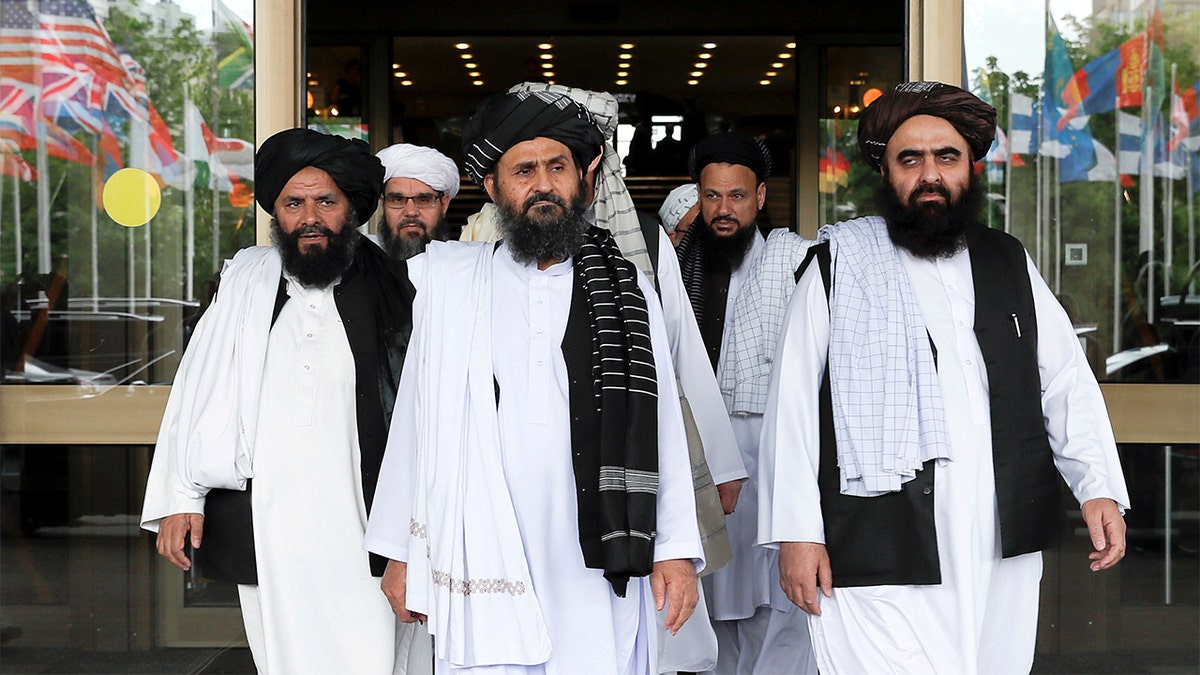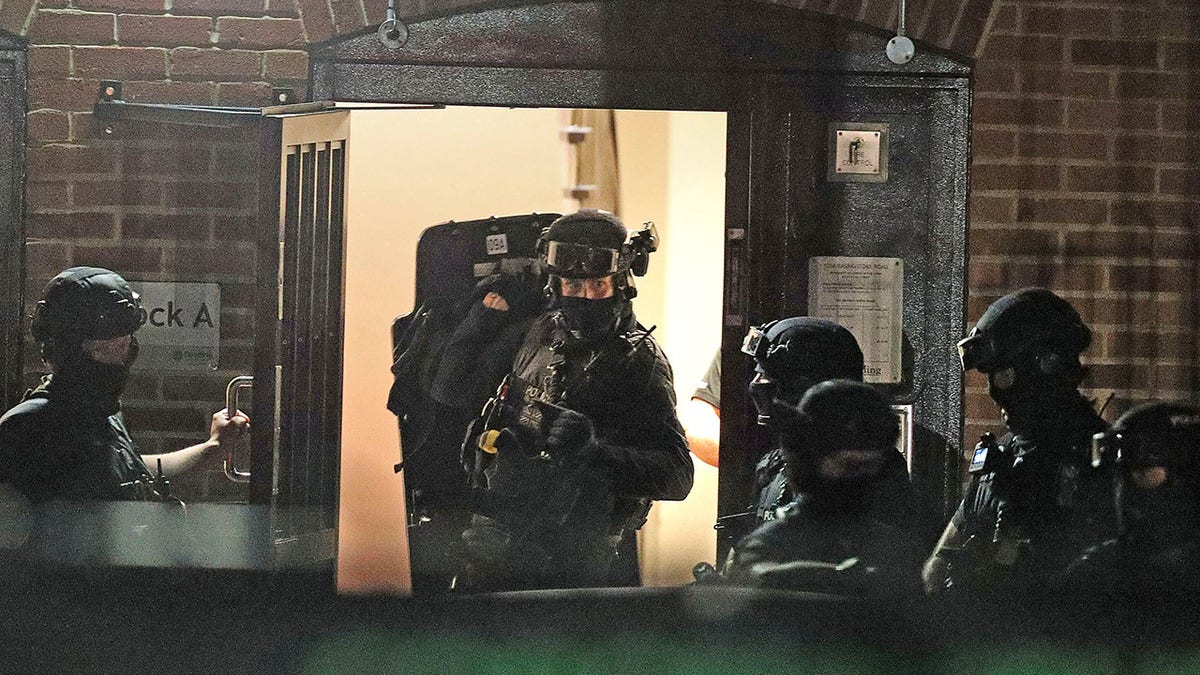Almost 8,500 terrorist attacks took place in 2019, killing more than 20,300 people – some 5,460 were known perpetrators and 14,840 were victims, according to a report released this week by the University of Maryland's National Consortium for the Study of Terrorism and Responses to Terrorism (START) as part of its Global Terrorism Database (GTD).
But even as talks intensified between the United States and the Taliban in Doha to ink a "peace deal" in Afghanistan – which was ultimately signed in February and involves an immediate drawdown of American troops – the insurgency was by far the highest executioners of attacks throughout all of last year, sustaining a "longstanding upward trend."
"The behavior of organizations engaging in peace talks can involve a variety of strategies," Erin Miller, the GTD program manager, told Fox News. "Increasing violence may derail peace talks, but in some cases, it's the escalation of violence that pushes parties to the negotiating table – when that violence reaches intolerable levels – and the organization may view that as leverage in the negotiations."
According to the data, the number of terrorist attacks in Afghanistan increased 2 percent between 2018 and 2019, and the number of victims killed in attacks carried out by the Taliban increased 9 percent between 2018 and 2019, "essentially sustaining the escalation that has taken place in Afghanistan in recent years."

Members of a Taliban delegation leaving after peace talks with Afghan senior politicians in Moscow in May 2019. (REUTERS/Evgenia Novozhenina)
The number of perpetrator deaths in Taliban attacks decreased by 31 percent, and the number of victim deaths increased 9 percent.
"While the Taliban engaged in peace talks with the United States, Afghanistan experienced 21 percent of all terrorist attacks worldwide in 2019, and 41 percent of all people killed in terrorist attacks (including assailants) in 2019 were killed in Afghanistan," the report surmised. "The Taliban in Afghanistan was responsible for more terrorist attacks in 2019 than any other group by a wide margin, and those attacks resulted in more deaths than the next ten deadliest perpetrator groups combined."
While Afghanistan endured the biggest chunk of assailants at 21 percent, it was followed by Yemen at 9 percent, Iraq at eight percent, India at 7 percent, Nigeria at 6 percent, and the Philippines at 5 percent. Pakistan and Somalia both stood at 4 percent, followed by Syria, the Democratic Republic of the Congo and Colombia at 3 percent and Nepal and Burkina Faso at 2 percent.

Armed police officers work at a block of flats off Basingstoke Road in Reading after an incident at Forbury Gardens park in Reading, England, Saturday, June 20, 2020. Several people were injured in a stabbing attack on Saturday, and British media said police were treating it as "terrorism-related." (Steve Parsons/PA via AP)
Aside from the Taliban, several of the perpetrator groups that increased terrorist violence in 2019 included Houthi extremists in Yemen (55 percent increase in attacks; 11 percent increase in total deaths; 54 percent increase in victim deaths), Boko Haram (43 percent increase in attacks; 47 percent increase in total deaths; 37 percent increase in victim deaths); and the Communist Party of Nepal – Maoist – Chand (148 percent increase in total attacks; seven people were killed in 2019 including one perpetrator, up from zero in 2018.
And in the United States in 2019, there were some 64 attacks deemed to be acts of terror – killing 51 people.
"Terrorism in the United States continued to be characterized by diverse, sometimes complex, and often ambiguous ideological influences, typically without clear ties to formal, named organizations," the report continued. "Perpetrators of the ten lethal terrorist attacks in the United States in 2019 included white supremacists/nationalists, anti-Semitic extremists linked to the Black Hebrew Israelite movement, an al-Qaida in the Arabian Peninsula operative, and a conspiracy theory extremist."
However, the report also underscores that the "vast majority of terrorist attacks in the United States in 2019 were non-lethal – some 84 percent, excluding the perpetrator deaths," and documented to have been motivated by "diverse ideological influences, including antifascist, anti-government, anti-LGBT, anti-Muslim, anti-Semitic, anti-white, left-wing, pro-choice, and white supremacist/nationalist extremism."
By comparison, between 2015 and 2019, 286 people were killed in terrorist attacks in the United States – excluding assailants. The report also indicated that 95 percent were killed in attacks involving firearms and that guns were the weapon of choice in 27 percent of terrorist attacks in America during that time period.
The United States seemingly mirrors a global downward trend in terrorist attacks, with the new report highlighting that 2019 was the fifth consecutive year of declining global terrorism since terrorist violence peaked in 2014 at nearly 17,000 attacks and more than 44,000 total deaths. The total number of terrorist attacks worldwide decreased by 50 percent between 2014 and 2019, and the total number of fatalities decreased by 54 percent.
In 66 percent of all terrorist attacks that took place last year, information on the perpetrator was identified. Moreover, in 59 attacks, "the individual perpetrator or perpetrators were identified, but they were not known to be affiliated with a particular group or organization."
"This represents a decline in the number of attacks carried out by unaffiliated individuals, which peaked at 102 in 2017. The lethality of attacks carried out by unaffiliated individuals also decreased, from more than 200 victims killed in 2016 to 98 in 2019," the report noted.
But while the analysis concluded that there had been an overall drop in terrorist attacks globally, it detected an uptick in terrorism in a number of African countries and a rise in "racially and ethnically motivated terrorism."
"Several important trends emerged in African countries in 2019, including in Nigeria, where terrorist violence overall decreased due to a reduction in attacks by Fulani extremists, but terrorist violence carried out by Boko Haram increased," the report asserted. "Boko Haram also increased terrorist activity in Cameroon, Chad, and Niger. In addition, Mali saw a 16 percent decrease in attacks in 2019, but a 41 percent increase in total deaths due to multiple (6) mass-casualty terrorist attacks in which more than 30 people were killed, compared to zero such attacks in previous years."
The GTD is widely considered the most comprehensive unclassified database of terrorist attacks in the world, and the 2020 update includes details of more than 200,000 events that took place worldwide over 50 years, from 1970 to 2019, according to the University of Maryland.

Iraqi forces conducted clearance operations. (Courtesy of Iraqi Counter Terrorism Service courtesy of CJTF-OIR)
The GTD research team combines artificial intelligence and analysis to systematically identify violent events that meet the definition of terrorism and record a wide range of information about each event. The database, which is sourced by news media articles published around the world, includes more than 100 variables documenting the date, location, weapons, tactics, targets, perpetrators, and casualties and outcomes of each attack.




















